doctorwhotoys.net







Exclusive Interview with Edmund Barnett-Ward, Director of Sculpting at Designworks Windsor, the company that sculpts Character Options
Doctor Who Action Figures
This interview took place in Windsor, England on the 27th February 2008 and is Strictly
Copyright © doctorwhotoys.net, All Rights Reserved; may not be reproduced in full or part.
All images are for the exclusive use of doctorwhotoys.net approved by and copyright © Designworks Windsor, Character Group plc and the BBC


Part 1 Behind the Scenes at Designworks
Part 2 All About Ed
Part 3 A Little History
Part 4 The Making of Doctor Who Action Figures
Part 5 Traditional Sculpting
Part 6 Sculpting Materials
Part 7 Approval
Part 8 Digital Sculpting
Part 9 The Sculptors
Part 10 The Story So Far
Welcome to Part 4 of a multi-part 10,000 word series describing in detail the making of Doctor Who Action Figures and including 63 exclusive new images of the figures in various stages of production.
"Typically", says Ed, "I go along with Al [Alisdair Dewar Research and Development Manager, Character Options] down to Cardiff in August when most of the scripts are in place and we'll talk with Doctor Who's brand managers, representatives from the production team and representatives from BBC Worldwide."
"One of the producers or script editors, with the designers as well, will go through what's coming up creature and character wise and what the story arcs are. We all sit and discuss what's going to make a good figure. After the meeting Al and I will, on the way back, probably plot it out fairly well and by the time we get back have quite a strong idea about what we're going to do."
"Because Al and I think in such a similar way, I think he's going to be thinking ultimately about the saleable product in the same way that I am, as that's my job to do that for him; to make things look as attractive as they can in pack and to make people want it even if they don't know what it is."
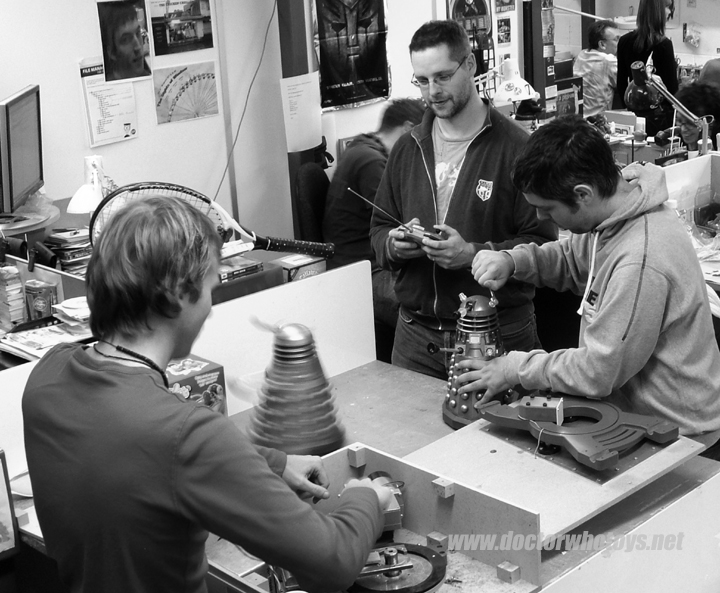
Designworks Workshop - All images exclusively approved for use only on doctorwhotoys.net by Designworks, Character Options and the BBC.
"For the core market we are looking at, the 8 to 10 year old boys, you've got to produce some cool looking monsters and hero characters with accessories. Many older fans and collectors are buying the product as ultimately it looks like the thing its supposed to look like and it comes from an immensely successful property with a large fan base."
"The wealth and depth of Doctor Who fandom is so great that it already had a built in market even before release."
"Its like anything, like revamping Star Wars, there are plenty of people that really have not taken to the new series at all, but at the same time there are equal numbers if not more people who have recently come to it. The traditional collectors, the students, and the thirtysomethings with a lot of disposable income, they'll come and buy Doctor Who figures as well but they aren't the core market - the core market is still kids. But I think thats the thing that we always set out to do, to make something that's attractive to both those markets - there's no reason not to."
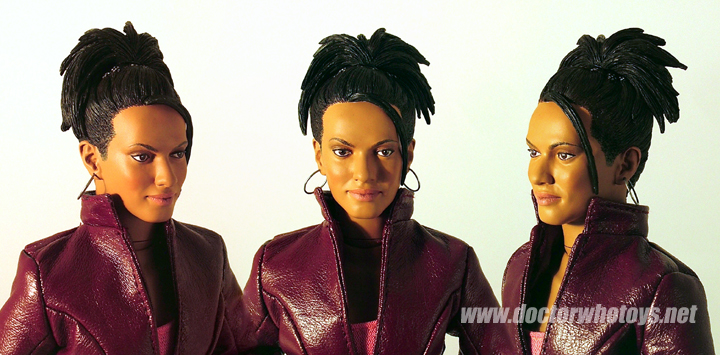
Martha Jones 12 Inch Approval Deco - All images exclusively approved for use only on doctorwhotoys.net by Designworks, Character Options and the BBC.
"There's plenty of people who will just slap a licence on a figure without doing what they should do and making it look like what it should do. But we didn't want to be those kind of people. I think that's why the line is so successful - because it is appealing to all those areas."
"Following our discussions, Al will do the provisional line plan and he emails it out to the BBC and to me at Designworks. This contains the waves of figures for the year with the assortments, thats to say what will come in each wave."
"Then the BBC put the mechanisms in place to get the reference material we need. In some cases the minute the reference material is generated it's sent over straight away whether we've asked for it or not. So we have had a lot of stuff from the new series, more information in fact than will ever be turned into action figures. I then start scheduling the work in and start scaling the reference material. I project manage and decide which sculptor will work on which new figure."
"Its not always one person who works on each figure. Most of the time its better to keep a single sculptor on one figure all the way through. But because of time constraints its not always possible."
"You might find that somebody's absolutely brilliant at producing clothing, and detail and can do all that incredibly accurately, but struggles with faces, struggles with human likenesses. Whereas, another person is blinding at human likenesses. So occasionally it happens that one sculptor has done the head and another has done the body, though two is probably the most that would ever work on a figure."
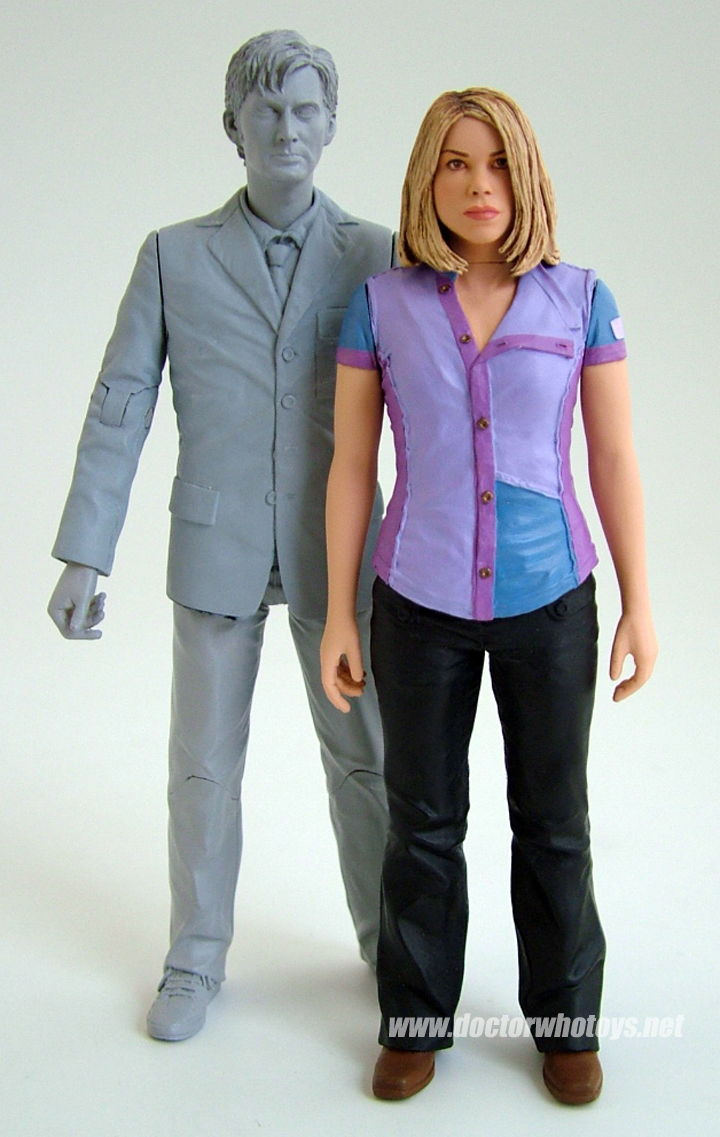
10th Doctor Original Sculpt with Rose Tyler Version 2 Approval Deco - All images exclusively approved for use only on doctorwhotoys.net by Designworks, Character Options and the BBC.
"From the BBC we get the raw image files, usually we get a folder full of reference material and they are usually what's called 'camera raw files' which are the largest format digital file that you can get. A single image is 93 megabytes. I can literally zoom in on a rivet on a jacket and not only see that there is writing on it, but read it. Its ridiculously high resolution. So those files are actually too high resolution, and too unwieldy, to use."
"The first thing I do is convert them all to jpegs. Its brilliant to have them at that resolution because then if later on somebody wants to look at the detailing on someone's shoe, or can't quite see the bag thats on their belt or the belt buckle or whatever, I can go in and get that high resolution shot of whatever they need. So I take those images, I'll convert them to jpegs and then take them into Photoshop and scale them."
"Most reference images that we get will come in with some 'unit' photography, that's to say photographs that have been taken on set with the characters and the correct lighting for the episode so that you see what they should look like. Also, all importantly, you will see new characters arranged interacting with old characters."
"If I have a photo of the new character alongside The Doctor and Martha or whichever assistant at that particular time, it's very helpful for the scale because then it's not necessary for me to be pestering people to find out how tall everyone is. If I have a photograph of David Tennant talking to somebody, say The Master, then I don't have to know how tall John Simm is because I can see exactly how tall he is in relation to David Tennant. So when I'm scaling my John Simm reference I know that I'm getting it the right size because thats what he looks like next to David Tennant."
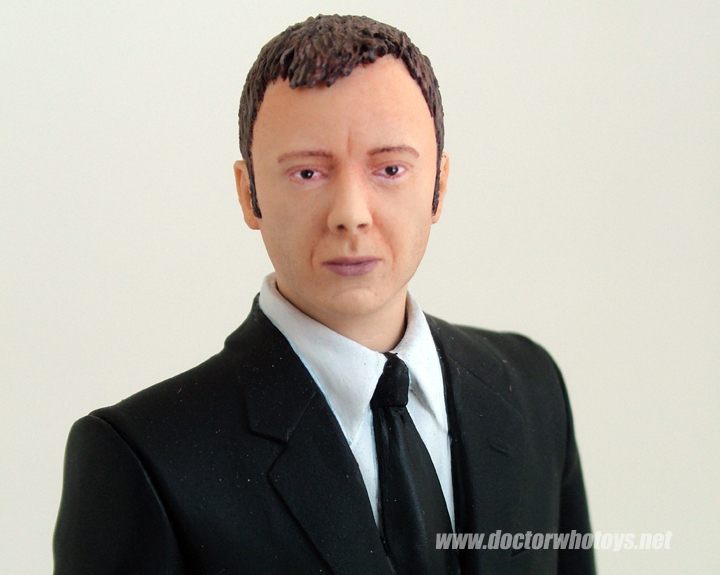
The Master Approval Deco - All images exclusively approved for use only on doctorwhotoys.net by Designworks, Character Options and the BBC.
"There is a scale factor that we have worked out that you can divide somebody's height by in inches and get the height that the figure should be in millimetres. But a lot of the time I'll actually scale off the Doctor, off David Tennant. So then I produce an image file which, if you were able to print it out on a single piece of paper, is generally about a metre long. That is then a scaled reference of all the images that we have of the character in turnaround. These are printed out."
"Usually the first sheet is the sheet that's most important to a sculptor because that will be the one that contains the basic turnaround; the profiles and the front and rear shots. So they'll have that in front of them along with some large scale photographs so they can see the details."
"The smaller, to scale, photographs are exactly at the scale that the figure will be and can be measured off with calipers precisely and geometrically. Whereas, the larger photographs inform the detail of the sculpt so you can see the close up work on costumes - whether they are lace, or embroidery, or buckle details on a uniform, all that kind of thing."
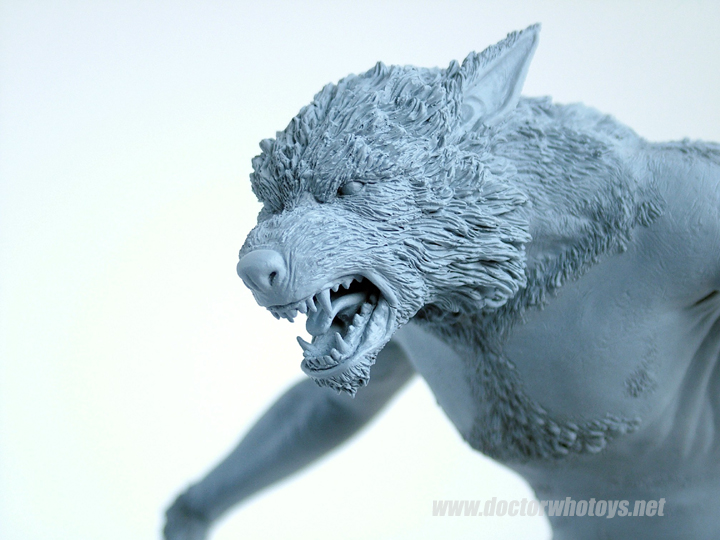
Werewolf Final Sculpt - All images exclusively approved for use only on doctorwhotoys.net by Designworks, Character Options and the BBC.
Thanks Ed
Now Read Part 5: Traditional Sculpting
Ever wondered how your Doctor Who Action Figure was actually made? Don't miss Part 5 in which Ed talks exclusively to doctorwhotoys.net about traditional sculpting.
Part 1 Behind the Scenes at Designworks
Part 2 All About Ed
Part 3 A Little History
Part 4 The Making of Doctor Who Action Figures
Part 5 Traditional Sculpting
Part 6 Sculpting Materials
Part 7 Approval
Part 8 Digital Sculpting
Part 9 The Sculptors
Part 10 The Story So Far
This interview is Strictly Copyright © doctorwhotoys.net, All Rights Reserved; may not be reproduced in full or part. All images are for the exclusive use of doctorwhotoys.net approved by and copyright © Designworks Windsor, Character Group plc and the BBC
List 12" Gallery News Contact
Content is copyright © doctorwhotoys.net